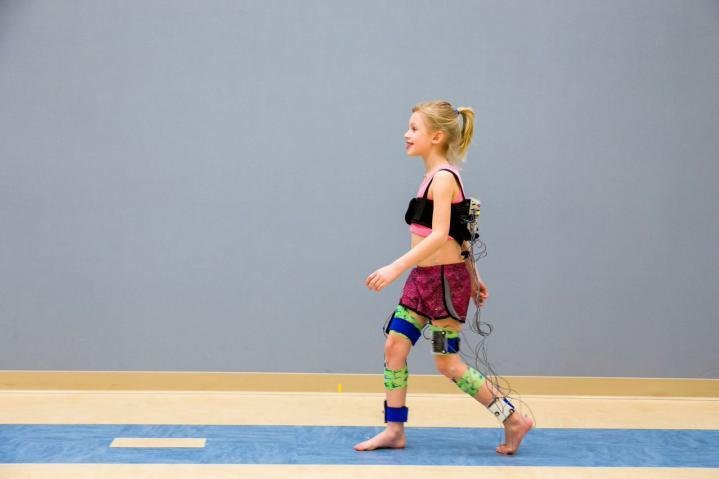Walk-DMC is a quantifiable measure of motor control in children with cerebral palsy that relies on data from electromyography, pictured, which uses electrodes to monitor muscle activity. Photo by Michael Schwartz/Center for Gait and Motion Analysis, Gillette Children's Specialty HealthCare
SEATTLE, April 27 (UPI) -- A measure of motor control -- the brain-to-muscle connection that allows people to move -- can indicate whether surgery will improve the condition of children with cerebral palsy, researchers in Washington report.
The Dynamic Motor Control Index During Walking, or Walk-DMC, is a set of algorithms measuring motor control that researchers at the University of Washington found matched up with how well a patient functioned after surgery, according to a study published in published in the journal Developmental Medicine and Child Neurology.
Cerebral palsy is caused by a brain injury near birth, causing anatomical issues that limit physical movement and disrupt a person's ability to control their muscles.
Doctors have used a combination of experience and judgment, as well as measures from electromyogrpahy, which uses electrodes to monitor muscle activity, to determine whether children should undergo intense surgeries to lengthen tendons, rotate bones or relocate muscles.
Outcomes of the procedures can be hit-or-miss, however, because brain injuries can vary so much from patient to patient, and because there has not been a quantitative method for predicting how children will do after surgery.
"The kids with good motor control are likely to get better once you fix their musculoskeletal issues because they have the capacity to control their muscle groups and limbs," Kat Steele, an assistant professor of mechanical engineering, said in a press release. "The big question is: What can we do for the other kids? If muscle control can change, that opens the door for more rehabilitation options. And if it can't, that's good to know so we can help optimize their movement and quality of life."
In a previous study, the researchers found children with cerebral palsy have motor strategies similar to adult stroke survivors, but much simpler. Using this understanding, the researchers developed a series of algorithms to translate motor control strategy into a single number.
For the study, researchers reviewed medical records for 473 children with cerebral palsy who underwent some type of treatment or surgery to improve movement, retroactively calculating the children's Walk-DMC score based on their ability before the procedure.
Children with higher Walk-DMC scores before surgery had better outcomes than did children with lower scores.
Future research will focus on if and how motor control changes after surgery or other treatment, and expanding options for children who are judged less likely to benefit from surgical treatment.
"Only about 50 percent of children have significant improvement in their movement after these highly invasive surgeries," Steele said. "Our motivation has really been to figure out how we can push up these success rates."















